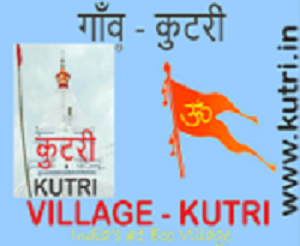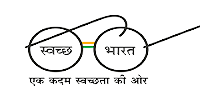Kutri Village Education System- Based on the search results, here’s an overview of the education system in Kutri Village, located in the Nawada district of Bihar, India:
- Historical Context:
- The region has a historical background of Vedic education, influenced by its proximity to ancient educational centers like Nalanda University.
- Formal school education began during the British Raj in the early 1900s.
- Current Educational Infrastructure:
- Kutri village has both middle school and high school facilities.
- Specifically there is:
- M.S. KUTRI: A middle school providing education from grades 1 to 8.
- INTER SCHOOL KUTARI: A high school offering education from grades 9 to 12.
- These schools serve not only Kutri but also students from surrounding villages.
- School Characteristics:
- The schools are generally co-educational.
- The medium of instruction is Hindi.
- Infrastructure varies, with some schools having basic facilities like classrooms, toilets, and playgrounds, while others have infrastructure limitations.
- Some schools have libraries, but computer aided learning is generally not present.
- Challenges:
- There are infrastructure challenges, such as some schools having broken boundary walls, or lacking computer aided learning.
- There have also been historical challenges regarding girls access to higher education.
- Positive Aspects:
- There is a history of the population working to establish needed schools in the village.
- The schools do provide education for local children.
To get the most current and detailed information, it would be beneficial to contact the local education authorities in the Nawada district.
What is Required Kutri Village Education System
Based on the information available, the Kutri Village education system, like many rural education systems in India, requires improvements in several key areas. Here’s a breakdown of the required enhancements:
1. Infrastructure Development:
- Improved School Facilities:
- This includes ensuring adequate classrooms, functional toilets, clean drinking water, and reliable electricity.
- The provision of science and computer labs, as well as well-stocked libraries, is crucial.
- Safe and well maintained school grounds.
- Digital Infrastructure:
- Integrating digital learning tools and providing internet access is essential to bridge the digital divide.
- This includes providing computers and other digital devices, as well as training teachers to use them effectively.
2. Teacher Quality and Availability:
- Qualified and Trained Teachers:
- Addressing the shortage of qualified teachers, especially in subjects like mathematics, science, and English.
- Providing ongoing teacher training and professional development to enhance teaching skills and knowledge.
- Teacher Retention:
- Creating incentives to attract and retain qualified teachers in rural areas.
3. Enhanced Educational Quality:
- Focus on Conceptual Learning:
- Moving away from rote learning and emphasizing conceptual understanding and critical thinking.
- Implementing innovative teaching methods that engage students and promote active learning.
- Multilingual Education:
- Addressing language barriers by providing education in the child’s mother tongue, where necessary.
- Holistic Education:
- Focusing on the overall development of the child, including their physical, mental, and emotional well-being.
4. Increased Access and Equity:
- Addressing Gender Disparities:
- Ensuring equal access to education for girls and overcoming cultural barriers that restrict their education.
- Financial Assistance:
- Providing financial assistance to students from impoverished backgrounds to cover education costs.
- Improved Access:
- Addressing geographical barriers that impede childrens ability to attend school, this includes improvements to travel to and from school.
5. Community Involvement:
- Strengthening Parent-Teacher Associations (PTAs):
- Encouraging community involvement in school management and supporting the educational process.
By addressing these areas, the Kutri Village education system can provide a more equitable and high-quality education for its students, empowering them to reach their full potential.
Who is Required Kutri Village Education System
The responsibility for the Kutri Village education system is shared among several entities, including:
- The Department of Education, Bihar:
- This is the primary governmental body responsible for overseeing and managing the education system in the state of Bihar, including in rural areas like Kutri Village.
- They are responsible for providing resources, setting curriculum standards, and ensuring that schools adhere to regulations.
- Local Government (Gram Panchayat):
- The Gram Panchayat plays a vital role in local governance, including education.
- They are involved in the management and maintenance of schools, and they can also advocate for the educational needs of the community.
- School Management Committees:
- These committees, which often include parents, teachers, and community members, are responsible for the day-to-day management of schools.
- Teachers:
- Teachers are responsible for providing quality education to students.
- Community and Parents:
- The community and parents have a crucial role in supporting the education of children. Their involvement helps create a conducive learning environment.
- Non-Governmental Organizations (NGOs):
- NGOs may also contribute to the education system by providing resources, training, and support to schools and communities.
Therefore, the responsibility is distributed across governmental bodies, local authorities, school personnel, and the community itself.
When is Required Kutri Village Education System

The need for improvements in the Kutri Village education system is not a future requirement, but an urgent, ongoing one. Here’s why:
- Immediate Needs:
- Many of the challenges, such as inadequate infrastructure, teacher shortages, and lack of digital resources, are affecting students now.
- Children are currently attending schools with these limitations, impacting their learning and future opportunities.
- Long-Term Impact:
- Investing in education is an investment in the future. Delays in addressing these issues can have long-lasting consequences for the community’s development.
- Improved education can break cycles of poverty and empower individuals to contribute to their society.
- The urgency of the situation:
- The information available indicates schools with broken infrastructure, and a lack of computer aided learning. In the current age, these are very important factors in providing a good education.
- Therefore, the need for improvements is immediate.
In essence, the “when” is “now.” The children of Kutri Village deserve access to quality education, and any delay in providing that access has real-world consequences.
Where is Required Kutri Village Education System
Based on the information gathered, the need for improvements in the Kutri Village education system is centered within:
- Kutri Village, Nawada District, Bihar, India:
- Specifically, the improvements are required within the existing educational institutions in the village, such as:
- M.S. KUTRI (middle school)
- INTER SCHOOL KUTARI (high school)
- The surrounding areas that utilize the schools located within Kutri Village also are included in needing these educational improvements.
- Specifically, the improvements are required within the existing educational institutions in the village, such as:
- It is also important to remember that the need for improvement is not just limited to the schools physical location, but also to the systems and policies that effect the children of Kutri Village. This includes:
- The local governing bodies that oversea the schools.
- The homes of the children, and the communities that they live in.
In essence, the “where” encompasses the schools themselves and the broader community they serve within Kutri Village and its surrounding locale.
How is Required Kutri Village Education System

Improving the Kutri Village education system requires a multi-faceted approach, encompassing several key strategies. Here’s a breakdown of how these improvements can be achieved:
1. Infrastructure Development and Resource Allocation:
- Government Funding:
- Increased allocation of government funds specifically for rural education infrastructure.
- Efficient and transparent utilization of these funds.
- Community Involvement:
- Engaging the local community in school maintenance and development projects.
- Utilizing local resources and labor where possible.
- Public-Private Partnerships:
- Exploring partnerships with private organizations to supplement government funding and resources.
- Focusing on providing digital resources and teacher training.
- Targeted Resource Distribution:
- Prioritizing schools with the most pressing needs, such as those lacking basic facilities.
2. Teacher Recruitment and Training:
- Incentive Programs:
- Offering competitive salaries and benefits to attract qualified teachers to rural areas.
- Providing housing and other amenities to make rural postings more appealing.
- Teacher Training and Professional Development:
- Implementing regular teacher training programs to enhance pedagogical skills and subject knowledge.
- Providing training on using digital tools and incorporating modern teaching methods.
- Local Teacher Recruitment:
- Encouraging local residents to pursue teaching careers and providing them with the necessary training.
3. Enhanced Educational Quality and Curriculum Development:
- Curriculum Reform:
- Adapting the curriculum to meet the specific needs of rural students.
- Integrating practical skills and vocational training to prepare students for local employment opportunities.
- Focus on Conceptual Learning:
- Implementing interactive teaching methods that encourage critical thinking and problem-solving.
- Reducing reliance on rote learning.
- Digital Learning Integration:
- Providing access to digital resources and training teachers on how to use them effectively.
- Utilizing online platforms for supplementary learning and teacher training.
- Multilingual Education:
- Where needed, provide education in the childs native language, to ease the burden of learning.
4. Increased Access and Equity:
- Addressing Gender Disparities:
- Implementing programs to encourage girls’ education, such as scholarships and awareness campaigns.
- Creating safe and supportive learning environments for girls.
- Financial Assistance:
- Providing scholarships and financial aid to students from low-income families.
- Reducing or eliminating school fees.
- Community Awareness Campaigns:
- Educating the community on the importance of education, and the benefits that it provides.
5. Community Involvement and Collaboration:
- Strengthening School Management Committees:
- Empowering school management committees to play a more active role in school governance.
- Providing training and resources to committee members.
- Parent-Teacher Collaboration:
- Encouraging regular communication and collaboration between parents and teachers.
- Organizing parent-teacher meetings and workshops.
- Collaboration with NGOs:
- Partnering with NGOs to provide supplementary educational programs and resources.
By implementing these strategies, the Kutri Village education system can be significantly improved, providing students with the quality education they deserve.
Case Study on Kutri Village Education System
Challenges and Potential in Kutri Village Education System, Nawada, Bihar
1. Introduction:
Kutri Village, nestled in the Nawada district of Bihar, India, presents a typical scenario of rural education challenges within a region historically significant for its educational heritage. While the village possesses educational infrastructure, including middle and high schools, significant gaps persist in providing quality and equitable education. This case study explores the current state of the Kutri Village education system, identifies key challenges, and proposes potential solutions.
2. Current State:
- Infrastructure:
- The village has established schools (M.S. KUTRI and INTER SCHOOL KUTARI), providing access to education up to higher secondary level.
- However, infrastructure limitations are evident, including potentially dilapidated buildings, insufficient classrooms, and inadequate sanitation facilities.
- Digital infrastructure is virtually absent, hindering access to modern learning resources.
- Teacher Availability and Quality:
- Potential teacher shortages, particularly in specialized subjects like science and mathematics, pose a challenge.
- Teacher training and professional development opportunities may be limited.
- Attracting and retaining qualified teachers in rural areas is a persistent issue.
- Educational Quality:
- Traditional teaching methods may dominate, with limited emphasis on critical thinking and problem-solving skills.
- Access to libraries and laboratory facilities is likely limited, hindering practical learning.
- Language barriers can affect the quality of education for some students.
- Access and Equity:
- Despite the presence of schools, socio-economic factors can impede access to education, particularly for girls and children from marginalized communities.
- Financial constraints and cultural norms may limit girls’ educational opportunities.
- Geographical isolation can also be a barrier.
- Community Involvement:
- While the community has historically worked to establish schools, ongoing active involvement in school management and support may vary.
- Parent-teacher collaboration may be limited.
3. Key Challenges:
- Infrastructure Deficiencies: Lack of adequate facilities hinders effective teaching and learning.
- Teacher Shortages and Quality: Insufficient qualified teachers and limited professional development.
- Digital Divide: Absence of digital resources restricts access to modern learning tools.
- Socio-economic Barriers: Poverty and cultural norms impede equitable access to education.
- Lack of Holistic Development: Insufficient focus on overall student development beyond academics.
- Limited Community Engagement: Weak parent-teacher collaboration and community involvement.
4. Potential Solutions and Recommendations:
- Infrastructure Improvement:
- Prioritize infrastructure development through government funding and community participation.
- Ensure access to clean water, sanitation, and electricity.
- Establish well-equipped libraries and laboratories.
- Teacher Empowerment:
- Implement incentive programs to attract and retain qualified teachers.
- Provide regular teacher training and professional development.
- Encourage local teacher recruitment.
- Digital Integration:
- Introduce digital learning tools and internet connectivity.
- Train teachers in digital pedagogy.
- Provide access to online learning resources.
- Equity and Inclusion:
- Implement programs to promote girls’ education and address gender disparities.
- Provide financial assistance to students from low-income families.
- Conduct community awareness campaigns on the importance of education.
- Holistic Education:
- Integrate extracurricular activities and vocational training.
- Focus on developing students’ critical thinking and problem-solving skills.
- Promote a supportive and inclusive learning environment.
- Community Engagement:
- Strengthen school management committees and parent-teacher associations.
- Encourage community participation in school activities.
- Foster collaboration with NGOs and local organizations.
- Governmental and NGO Collaboration:
- Coordinate efforts between the Bihar Department of Education, and NGO’s that are working to improve rural education.
5. Conclusion:
The Kutri Village education system faces significant challenges, but it also possesses the potential for positive transformation. By implementing targeted interventions and fostering collaboration among stakeholders, the village can provide its children with the quality education they deserve, empowering them to build a brighter future. This case study highlights the importance of a holistic approach that addresses infrastructure, teacher quality, equity, and community involvement to create a sustainable and effective education system in rural India.
White paper on Kutri Village Education System
Transforming the Kutri Village Education System: A Blueprint for Sustainable Development
Executive Summary:
Kutri Village, located in the Nawada district of Bihar, India, presents a microcosm of the challenges faced by rural education systems across the nation. This white paper analyzes the current state of education in Kutri Village, identifies critical gaps, and proposes a comprehensive, multi-stakeholder strategy for sustainable improvement. By focusing on infrastructure development, teacher empowerment, digital integration, equity, and community engagement, we aim to transform the Kutri Village education system into a model for rural educational excellence.
1. Introduction:
Education is the cornerstone of societal development. In rural communities like Kutri Village, access to quality education is crucial for breaking cycles of poverty and fostering sustainable growth. This white paper outlines the necessary steps to create a robust and equitable education system that empowers the children of Kutri Village to reach their full potential.
2. Current Educational Landscape:
- Infrastructure:
- Existing schools (M.S. KUTRI and INTER SCHOOL KUTARI) provide essential access, but suffer from infrastructure deficiencies.
- Inadequate classrooms, sanitation facilities, and lack of basic amenities hinder the learning environment.
- Digital infrastructure is virtually non-existent, creating a significant digital divide.
- Teacher Quality and Availability:
- Teacher shortages, particularly in specialized subjects, affect educational quality.
- Limited access to professional development and training hinders teacher effectiveness.
- Attracting and retaining qualified teachers in rural areas is a persistent challenge.
- Educational Quality:
- Traditional teaching methods often prevail, limiting the development of critical thinking and problem-solving skills.
- Insufficient access to libraries and laboratories restricts practical learning.
- Language barriers can impede effective communication and learning.
- Access and Equity:
- Socio-economic factors, including poverty and cultural norms, create barriers to equitable access.
- Girls face specific challenges related to cultural biases and limited resources.
- Geographical isolation adds to the difficulties of accessing education.
- Community Engagement:
- While the community has historically been involved in establishing schools, ongoing engagement needs strengthening.
- Parent-teacher collaboration and active participation in school management are crucial.
3. Key Challenges and Impact:
- Infrastructure Deficiencies: Hinders effective teaching and learning, creating an unsupportive environment.
- Teacher Shortages and Quality: Compromises the quality of education and limits student potential.
- Digital Divide: Restricts access to modern learning resources and opportunities.
- Socio-economic Barriers: Perpetuates inequality and limits the educational opportunities of marginalized groups.
- Lack of Holistic Development: Neglects the development of essential life skills and critical thinking.
- Limited Community Engagement: Weakens the support system for schools and students.
4. Proposed Strategies for Transformation:
- Infrastructure Development:
- Allocate increased government funding for rural school infrastructure.
- Establish public-private partnerships to supplement resources.
- Prioritize the construction of well-equipped classrooms, libraries, and laboratories.
- Ensure access to clean water, sanitation, and electricity.
- Teacher Empowerment:
- Implement incentive programs to attract and retain qualified teachers.
- Provide regular professional development and training.
- Encourage local teacher recruitment and training.
- Utilize digital tools to provide teachers with more resources.
- Digital Integration:
- Establish digital learning centers with internet connectivity.
- Provide digital devices and training for teachers and students.
- Utilize online learning platforms and resources.
- Equity and Inclusion:
- Implement programs to promote girls’ education, including scholarships and awareness campaigns.
- Provide financial assistance to students from low-income families.
- Conduct community outreach programs to address cultural barriers.
- Holistic Education:
- Integrate extracurricular activities and vocational training.
- Focus on developing critical thinking, problem-solving, and communication skills.
- Promote a safe and supportive learning environment.
- Community Engagement:
- Strengthen school management committees and parent-teacher associations.
- Encourage community participation in school activities and decision-making.
- Foster collaboration with NGOs and local organizations.
- Governance and Collaboration:
- Strong collaboration between the Bihar department of education, local government, and NGO’s.
- Transparent and accountable usage of all funding.
5. Implementation and Monitoring:
- Establish a multi-stakeholder task force to oversee implementation.
- Develop a detailed implementation plan with clear timelines and responsibilities.
- Implement a robust monitoring and evaluation system to track progress and identify areas for improvement.
- Conduct regular assessments to measure student learning outcomes and teacher effectiveness.
6. Conclusion:
Transforming the Kutri Village education system requires a concerted and collaborative effort from all stakeholders. By implementing the strategies outlined in this white paper, we can create a sustainable and equitable education system that empowers the children of Kutri Village to thrive. This investment in education will not only benefit the village but also contribute to the overall development of the region and the nation.
Industrial Application of Kutri Village Education System
When considering the “industrial application” of an improved Kutri Village education system, it’s essential to think broadly about how education contributes to economic development. Here’s how a strengthened education system can have industrial relevance:
1. Skill Development for Local Industries:
- Vocational Training:
- Implementing vocational training programs tailored to the needs of local industries. This could include training in:
- Agricultural technologies (relevant to the region’s agrarian economy).
- Small-scale manufacturing and handicrafts.
- Basic technical skills (electrical, plumbing, etc.).
- This directly prepares students for employment opportunities within the region.
- Implementing vocational training programs tailored to the needs of local industries. This could include training in:
- Entrepreneurship Education:
- Integrating entrepreneurship education into the curriculum to foster a culture of innovation and self-reliance.
- This can empower students to start their own businesses, contributing to local economic growth.
2. Enhancing the Workforce:
- Basic Literacy and Numeracy:
- A strong foundation in literacy and numeracy is essential for any workforce.
- Improved education will produce individuals capable of understanding instructions, performing calculations, and communicating effectively.
- Digital Literacy:
- In today’s economy, digital literacy is crucial.
- Providing computer training and internet access will equip students with the skills needed to participate in the modern workforce.
- Adaptability and Problem-Solving:
- A quality education fosters critical thinking and problem-solving skills, which are highly valued by employers.
- This enables individuals to adapt to changing workplace demands.
3. Contributing to Regional Economic Growth:
- Attracting Investment:
- A well-educated workforce can attract businesses and industries to the region.
- Companies are more likely to invest in areas with a skilled labor pool.
- Boosting Agricultural Productivity:
- Improved agricultural education can lead to increased productivity and efficiency in the region’s primary industry.
- This can improve the livelihoods of farmers and contribute to overall economic growth.
- Diversifying the Economy:
- Education can help diversify the local economy by creating opportunities in new sectors, such as tourism, technology, and small-scale manufacturing.
In essence:
- The “industrial application” of an improved Kutri Village education system is about creating a skilled and adaptable workforce that can drive local and regional economic development.
- It’s about providing students with the knowledge and skills they need to succeed in the 21st-century economy.
By focusing on these areas, the Kutri Village education system can play a vital role in fostering sustainable economic growth and improving the lives of its residents.
References
- ^ Jump up to:a b “Nawada District Census Handbook Page No. 3 for Population and Page No. 76 for Village Code” (PDF).
- ^ Jump up to:a b “Postal Code (PIN) and STD Code”.
- ^ “Details of Blocks and Villages of Nawada District”.
- ^ “Panchayat and Village Details of Nawada” (PDF).
- ^ Frawley, William (May 2003). International Encyclopedia of Linguistics: 4-Volume Set By William Frawley. ISBN 9780195139778.
- ^ “Station: Patna Climatological Table 1981–2010” (PDF). Climatological Normals 1981–2010. India Meteorological Department. January 2015. pp. 601–602. Archived from the original (PDF) on 5 February 2020. Retrieved 2 March 2020.
- ^ “Extremes of Temperature & Rainfall for Indian Stations (Up to 2012)” (PDF). India Meteorological Department. December 2016. p. M36. Archived from the original (PDF) on 5 February 2020. Retrieved 2 March 2020.
- ^ “Table 3 Monthly mean duration of Sun Shine (hours) at different locations in India” (PDF). Daily Normals of Global & Diffuse Radiation (1971–2000). India Meteorological Department. December 2016. p. M-3. Archived from the original (PDF) on 5 February 2020. Retrieved 2 March 2020.
- ^ “Higher Secondary School List SL. No. 64”.
- Wallace, Dorothy (2009). “Parts of the Whole: Approaching Education as a System”. Vol. 2. doi:10.5038/1936-4660.2.2.9.
- ^ Revision of the International Standard Classification of Education (ISCED), Retrieved 5 April 2012.
- ^ a b c d Marshall 2006, p. 33–37.
- ^ a b c d e f g h i Curtis et al. 2013, 1. What is education?.
- ^ Matheson 2014, p. 15–32, What is education?.
- ^ a b c d Chazan 2022, p. 13–21, What Is “Education”?.
- ^ UNESCO 2018.
- ^ a b Peters 1967, What is an Educational Process?.
- ^ a b c HarperCollins staff 2023.
- ^ Etymology Online staff.
- ^ a b Peters 2015, 1. Criteria of Education.
- ^ a b c d Beckett 2011, p. 239–255.
- ^ Peters, Woods & Dray 1973, Aims of Education: A Conceptual Inquiry.
- ^ Biletzki & Matar 2021.
- ^ Sluga 2006, p. 1–21.
- ^ Wilson 2003, p. 101–108.
- ^ a b c Watson 2016, p. 146–159.
- ^ Biesta 2015, p. 75–87.
- ^ Kotzee 2011, p. 549–564.
- ^ Smith 2020, p. 781–783.
- ^ a b Siegel 2023.
- ^ a b c d e Siegel, Phillips & Callan 2018.
- ^ a b Siegel 2010, p. 3–9, Introduction: Philosophy of Education and Philosophy.
- ^ a b Haack 1981, p. 289–302.
- ^ a b c Bowen, Gelpi & Anweiler 2023, introduction.
- ^ Curren 1996, Education, philosophy of.
- ^ Davies & Barnett 2015, p. 1–25, Introduction.
- ^ a b Beckett 2018, p. 380–389.
- ^ Dewey 2004, 6. Education as Conservative and Progressive.
- ^ Jackson 2011, 1. Dewey’s parting words.
- ^ Freire 1970, Chapter 2.
- ^ Template:Multiref2
- ^ Template:Multiref2
- ^ Strauss 1984, p. 195–222.
- ^ a b c La Belle 1982, p. 159–175.
- ^ a b Tudor 2013, p. 821–826.
- ^ Template:Multiref2
- ^ a b c d Eshach 2007, p. 171–190.
- ^ a b Scribner & Cole 1973, p. 553–559.
- ^ Mead 1943, p. 633–639.
- ^ a b c d e f g h i OECD 2018, p. 80–85.
- ^ Salganik, Matheson & Phelps 1997.
- ^ UNESCO 2012, pp. 6, 11–12, 25.
- ^ Template:Multiref2
- ^ UNESCO 2012, pp. 30–32.
- ^ OECD 2015, pp. 29–32.
- ^ a b Roser & Ortiz-Ospina 2013.
- ^ OECD 2015, pp. 39–43.
- ^ UNESCO 2012, pp. 33–37.
- ^ Claire et al. 2011, p. 137.
- ^ Close 2014, p. 76.
- ^ OECD 2015, pp. 47–52.
- ^ UNESCO 2012, pp. 38–42.
- ^ OECD 2015, pp. 59–63.
- ^ UNESCO 2012, pp. 43–45.
- ^ OECD 2015, pp. 69–71.
- ^ UNESCO 2012, pp. 46–47.
- ^ OECD 2015, pp. 73–76.
- ^ UNESCO 2012, pp. 48–50.
- ^ OECD 2015, pp. 81–84.
- ^ UNESCO 2012, pp. 51–54.
- ^ OECD 2015, pp. 89–92.
- ^ UNESCO 2012, pp. 55–58.
- ^ OECD 2015, pp. 97–100.
- ^ UNESCO 2012, pp. 59–61.
- ^ Neufeld 2015, p. 85–93.
- ^ The Editors of Encyclopaedia Britannica 2023.
- ^ Template:Multiref2
- ^ Jacob, Cheng & Porter 2015, p. 3.
- ^ Iseke 2013, p. 559–577.
- ^ Reyhner & Singh.
- ^ Bullard & Hitz 1997, p. 15–22.
- ^ DeVitis & Irwin-DeVitis 2010, Preface.
- ^ Lee 2021, p. 714–723.
- ^ Mazurek & Winzer 1994, p. xvii.
- ^ Tomlinson 2012, p. 73.
- ^ HarperCollins staff 2023a.
- ^ Emaliana 2017, p. 59–70.
- ^ Jackson 2011a, 6. In Pursuit of Perfection.
- ^ Main 2012, p. 82–95.
- ^ Template:Multiref2
- ^ Giuseffi 2019.
- ^ Resources 2021, p. 567–568.
- ^ UNESCO 2012, pp. 73–75.
- ^ Berry 2016, p. 459–482.
- ^ Li 2006, p. 6.
- ^ Template:Multiref2
- ^ Template:Multiref2
- ^ Rosenkranz & Brackett 1872, p. 95.
- ^ Harris 1881, p. 215–227.
- ^ Ali-Coleman & Fields-Smith 2022.






